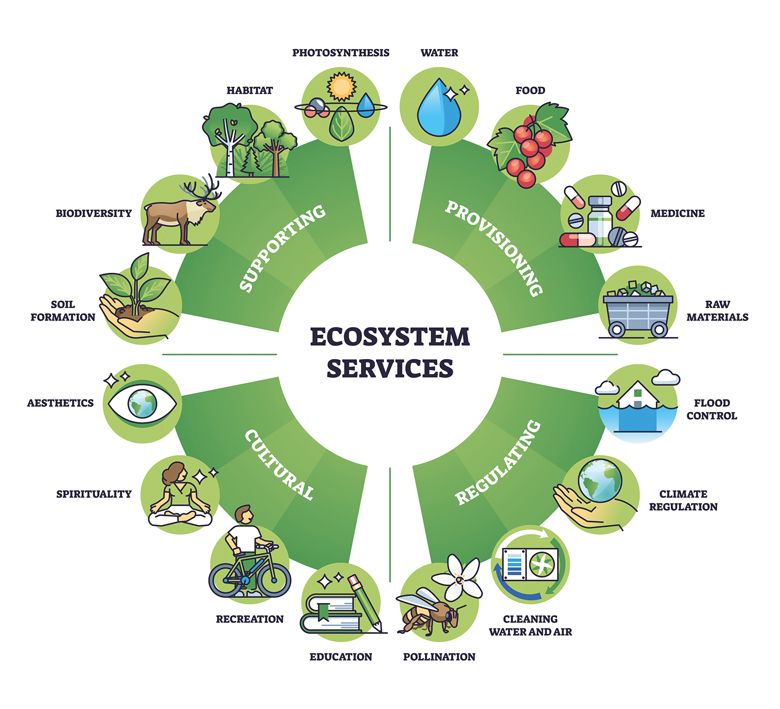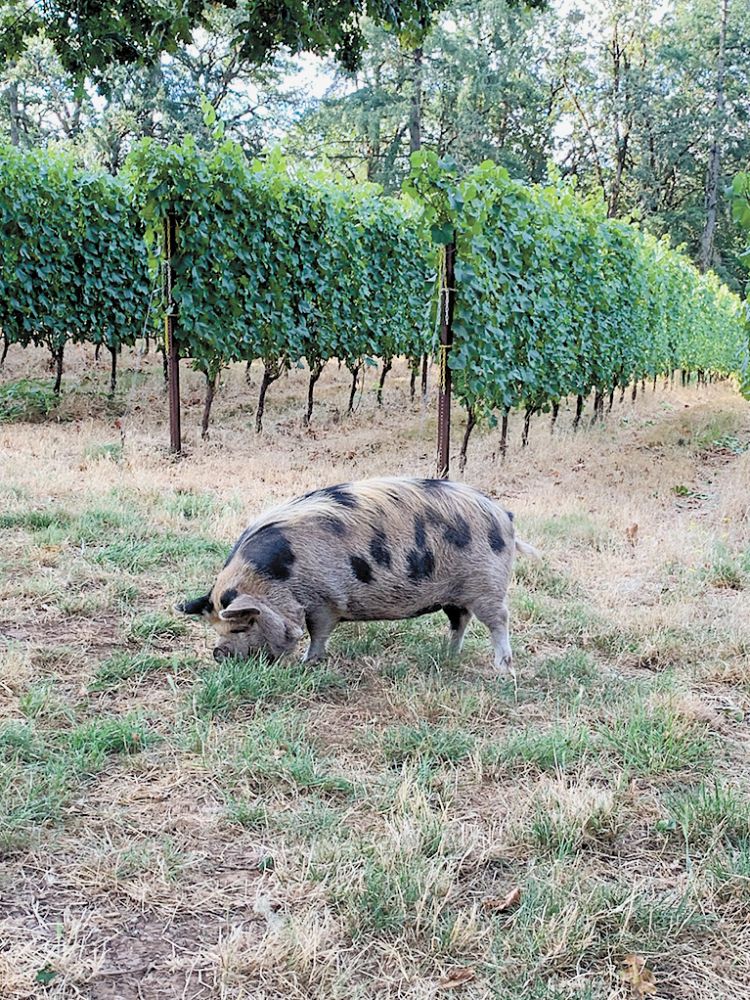Biodiversity Buzz
Learn about provisions, regulating, cultural and supporting services


By Jessica M. Cortell, Ph.D.
What comes to mind when you hear the term “biodiversity?” Do you discount it as a marketing buzzword or rather a factor critical for life as we know it on this planet? In the wine industry, we talk plenty about sustainability but often forget to experience the many important connections and interwoven web that biodiversity creates and supports.
The Oxford Dictionary provides a simple definition of biodiversity as the variety of life in the world or in a particular habitat or ecosystem. The three levels of genetic, species and ecosystem diversity work together to create the complexity of life on Earth. But how often do we notice this web and the impact it has in our vineyards or backyards?
Ecosystem services are often grouped into four categories: provisioning, regulating, cultural and supporting services. The benefits of “ecosystem services” can seem intangible so I offer you some examples.
My own vineyard, Carlile’s Crest, is quite diverse with a swath of oak trees running through the property and strips of large Douglas firs on the north and south flanks. About half the acres are planted with grapevines. What remains is home to fruit trees, a garden, flower beds and areas occupied with native plants. I’ve been following regenerative agriculture farming practices for at least seven years. These techniques encourage biodiversity, enhance nutrients in the soil and improve nearby watersheds. A drift of grazing Kune Kune pigs also roam my land.
PROVISIONING
Examples of “provisioning” include providing clean water, food, wood and medicines. My funniest observation of provisioning occurred one fall when I traveled to Italy for three weeks and asked neighbors to feed my pigs. When I returned, Luisa, my largest pig, was so fat she could hardly stand up or walk! The oak trees had a bumper crop of acorns and my pigs gorged themselves on the delectable treats. They didn’t need food out of the bags.
An apple tree grows that often holds its fruit most of the winter. I watched as one by one, the apples gradually fell, providing a nice delicacy for the pigs. Late in the winter, a woodpecker began eating the fruit that remained. That is when I started connecting the dots between my actions and how they could impact other species… what if I had picked all the apples, leaving nothing behind? I found it to be an important lesson.
Provisioning can include maintaining a pond to support frogs, red-winged blackbirds, ducks, blue herons, insects and other wildlife. Simply making water available supports biodiversity.
SUPPORTING
The supporting role of ecosystem services includes preserving habitat for birds and animals. We humans, in our need for tidiness, often remove what could have served as a perfect home for critters. Here are two examples I observed in the past year.
While cleaning up fallen oak leaves after Thanksgiving, I fell ill with COVID. Not well enough to complete what I started, a couple leaf piles remained. I internally beat myself up for not finishing my task as the months passed. Finally, in the middle of the summer, I began removing the remaining leaves. Doing so disturbed several snakes of various sizes who had made a home within them. Oops! Snakes provide excellent rodent control. Instead of removing all the leaves, I consolidated them into a single pile to remain as the snake home.
The second occurred when I was clearing out blackberries to plant my garden. As I hacked away at the thorny canes, a bird incessantly chirped loudly at me. From experience, I knew this meant I was near its nest. I decided my garden space was plenty big and left the remaining blackberries intact, along with the bird’s chosen habitat.
REGULATING
Every action has an effect on other species in varying ways. It is not always easy to see the impacts of one action over another. Microbes play important regulatory roles. For example, choosing not to till the soil has contributed significantly to microbial populations, nutrient cycling, water storage, aeration and much more. The ecosystem has ways of regulating itself. However, we still have a limited understanding of the complexity of below-ground ecosystems.
CULTURAL
Cultural benefits are important to consider as well. Often, we place a dollar rate on land. How many acres of grapes can we plant? Can we farm all the land to get a tax deferral; etc.? By doing so, we miss the value of recreational, spiritual and educational benefits from spending time in nature. The study of ecopsychology investigates these health benefits. Time spent in nature is vital for optimum human health!
Early on, when planning my vineyard, I carefully selected which trees to keep, and which to remove. I retained a lovely patch of oaks in the middle of the property that I refer to as my “picnic area”. One day, a visiting soil scientist suggested, “You know Jessica, this soil is good for grapes, you could plant this area.” My answer was, “No, I gain many more benefits maintaining the grove and my picnic area than if I planted another ¼ or ½ acre of grapes.” That was ten years ago. I feel this even more strongly today.












